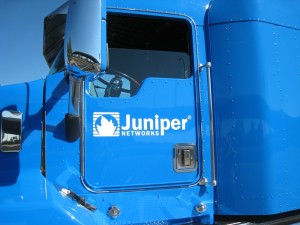
If you know anything about my approach to certifications, you will know that I am a huge proponent of building a tracker to make sure you are studying the right topics and to measure your progress and keep yourself accountable.
NOTE: I only show Section 1 below on my blog home page – you might need to click the READ MORE link in order to see the other sections.
Section 1: Networking Fundamentals
Identify the concepts and functionality of various fundamental elements of networking
- The function of routers and switches
- Optical network fundamentals – SONET/SDH, OTN
- Ethernet networks
- Layer 2 addressing, including address resolution
- IPv4 and IPv6 fundamentals
- Layer 3 / IP addressing, including subnet masks
- Subnetting and supernetting
- Decimal to binary conversion
- Longest match routing
- Connection-oriented vs. connectionless protocols
Section 2: Junos OS Fundamentals
Identify the concepts, benefits, and functionality of the core elements of the Junos OS
- Juno’s device portfolio – product families, general functionality
- Software architecture
- Control and forwarding planes
- Routing Engine and Packet Forwarding Engine
- Protocol daemons
- Transit traffic processing
- Exception traffic
Section 3: User Interfaces
Identify the concepts, operation, and functionality of the Junos user interfaces
- CLI functionality
- CLI modes
- CLI navigation
- CLI Help
- Filtering output
- Active vs. candidate configuration
- Reverting to previous configurations
- Modifying, managing, and saving configuration files
- Viewing, comparing, and loading configuration files
- J-Web – core/common functionality
Section 4: Junos Configuration Basics
Identify the main elements of configuring Junos devices
- Factory-default state
- Initial configuration
- User accounts
- Login classes
- User authentication methods
- Interface types and properties
- Configuration groups
- Additional initial configuration elements – NTP, SNMP, Syslog, etc.
- Configuration archival
- Logging and tracing
- Rescue configuration
Describe how to configure basic components of a Junos device
Section 5: Operational Monitoring and Maintenance
Show commandsIdentify methods of monitoring and maintaining Junos devices
- Monitor commands
- Interface statistics and errors
- Network tools – ping, traceroute, telnet, SSH, etc.
- Real-time performance monitoring (RPM)
- Junos OS installation
- Software upgrades
- Powering on and shutting down Junos devices
- Root password recovery
Describe monitoring and maintenance procedures for a Junos device
Section 6: Routing Fundamentals
Identify basic routing concepts and functionality for Junos devices
- Packet forwarding concepts
- Routing tables
- Routing vs. forwarding tables
- Route Preference
- Routing Instances
- Static routing
- Advantages of / use cases for dynamic routing protocols
Describe how to configure and monitor basic routing elements for a Junos device
Section 7: Routing Policy and Firewall Filters
Default routing policiesIdentify the concepts and functionality of routing policy and firewall filters on Junos devices
- Import and export policies
- Routing policy flow
- Effect of policies on routes and routing tables
- Policy structure and terms
- Policy match criteria, match types, and actions
- Firewall filter concepts
- Filter match criteria and actions
- Effect of filters on packets
- Unicast reverse-path-forwarding (RPF)
Describe how to configure and monitor routing policies and firewall filters on a Junos device